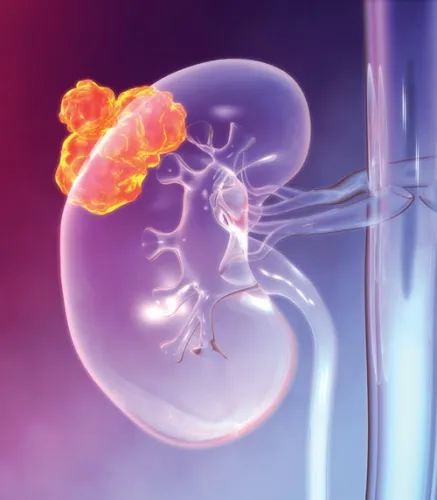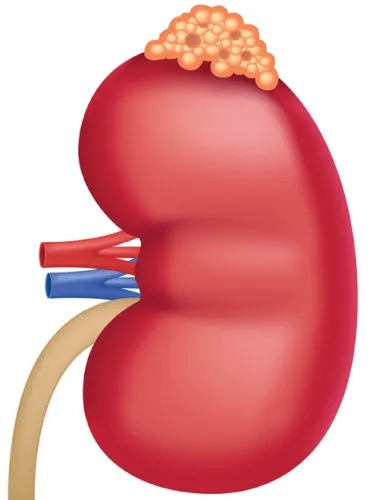Use These 5 Tips to Refine Your Renal Cell Cancer Coding Skills
Eliminate incidental findings from your coding for a cleaner claim. Computed tomography (CT) and magnetic resonance imaging (MRI) allow radiologists to diagnose kidney cancer and determine if the disease has spread to other body areas. As a coder, your job is to sift through the documentation to find the right information to correctly code the encounter, testing, and diagnosis. Refresh your renal cell carcinoma coding skills with these helpful tips. Analyze This Renal Cancer Scenario A patient presents to their general physician (GP) with high blood pressure, fatigue, loss of appetite, and weight loss. The patient has also noticed blood in their urine. After a blood test reveals anemia (low iron levels), the GP refers the patient to a radiology practice for a CT scan of their abdomen to rule out any abnormalities. The radiologist performs a CT without contrast and then with contrast. The imaging scans show a growth near the patient’s kidney. The radiologist reports their findings to the GP, who diagnoses the patient with renal cell carcinoma of the right kidney. The GP then requests MRI with contrast of the abdomen to receive a detailed view of the kidneys and to check if the cancer has metastasized to other areas of the body, including the renal vein and inferior vena cava. Tip 1: Use of Contrast Changes the Coding Choice If a patient experiences blood in their urine, they could have a variety of conditions, including cancer, which is why further testing is critical to confirming a diagnosis. In the scenario above, the patient presented numerous symptoms that are consistent with cancer. Using that information, the physician chose to order CT without and with contrast and, later, MRI tests with contrast “to be able to see if there were issues such as kidney stones, possible other obstructions, or strictures, hemorrhaging, etc.,” says Sandy Giangreco Brown, MHA, BS, RHIT, CCS, CCS-P, CHC, COC, CPC, CPC-I, COBGC, PCS, director of coding and revenue integrity at CLA in Loveland, Colorado. When radiologists perform imaging tests on a patient’s abdomen, they can detect kidney tumors, as well as other abnormalities accurately. Urinalysis and blood tests can reveal if the patient is experiencing kidney problems, but radiologists can differentiate malignant tumors from benign lesions or cysts. CT and MRI code options both can vary based on the use of contrast, as you’ll see in the next tip. Stay alert for those details in the documentation to ensure you select the most accurate code. Tip 2: Add a Modifier for Multiple Imaging Tests For this scenario, you’ll need two CPT® codes for the imaging tests. You’ll assign 74170 (Computed tomography, abdomen; without contrast material, followed by contrast material(s) and further sections) to report the CT scan of the patient’s abdomen. To report the MRI with contrast, you’ll assign 74182 (Magnetic resonance (eg, proton) imaging, abdomen; with contrast material(s)). Is a modifier necessary? A modifier would only be appropriate if the radiologist performed the CT and MRI on the same day. In that case, depending on the payer’s preferences, you may need to append modifier 59 (Distinct Procedural Service) or one of the X{EPSU} modifiers to help ensure reimbursement. Plus, the documentation should back up the medical necessity for the additional procedure. For example, the documentation should include a new order from the patient’s GP requesting the MRI. Tip 3: Nail Down the Diagnosis Code With Table of Neoplasms To select the correct diagnosis code for this scenario, you’ll need to consult the Table of Neoplasms in the ICD-10-CM code set. You’ll find renal in the Table of Neoplasms, and when you check the first column, labeled “Malignant Primary,” you’ll see C64.- (Malignant neoplasm of kidney, except renal pelvis). You’ll then turn to the tabular list to confirm the diagnosis code, where you’ll find C64.- requires a 4th character. The 4th character indicates laterality, so you’ll assign C64.1 (Malignant neoplasm of right kidney, except renal pelvis) for the confirmed diagnosis of renal cell carcinoma of the right kidney. Tip 4: Code the Symptoms If Cancer Isn’t Confirmed “If there is a negative exam, then you’ll code the patient’s signs and symptoms,” Brown says. Why? According to ICD-10-CM Official Guidelines, Section I.B.4, you should code the signs and symptoms “when a related definitive diagnosis has not been established (confirmed) by the provider.” For example, if the scenario didn’t have a confirmed diagnosis, you’d assign: Often before providers can make a definitive diagnosis of cancer, they may need to perform several tests and procedures to rule out other conditions. Until you receive documentation with a confirmed diagnosis, you’ll continue to report signs and symptoms. According to ICD-10-CM Official Guidelines, Section IV.H, you shouldn’t code diagnoses documented as “probable”, “suspected,” “questionable,” “rule out,” “compatible with,” “consistent with,” or “working diagnosis” or similar terms indicating uncertainty. Tip 5: Leave Incidental Findings Out of Your Claim How should you handle incidental findings in a radiology report? “There may be ‘variables’ identified which will need to be followed up with the ordering provider or radiologist to confirm the diagnosis. There may be ‘incidental findings’ as well that would need to be confirmed with the providers and could be captured as secondary diagnoses only,” Brown says. These incidental findings are conditions the radiologist may notice and document during the procedure, but they shouldn’t be coded in your claims. According to AHA Coding Clinic® for ICD-10-CM and ICD-10-PCS, Volume 27, Number 3, “It is inappropriate to report an incidental finding found on a radiology report when the finding is unrelated to the sign, symptom, or condition that necessitated the performance of the test for a patient being seen” since incidental findings are not considered acceptable documentation.





